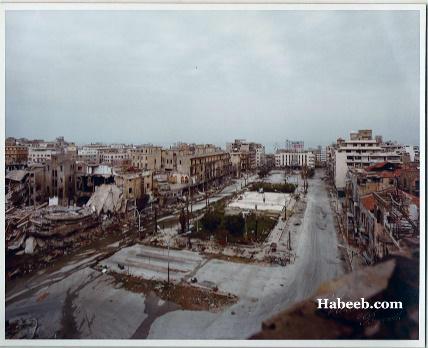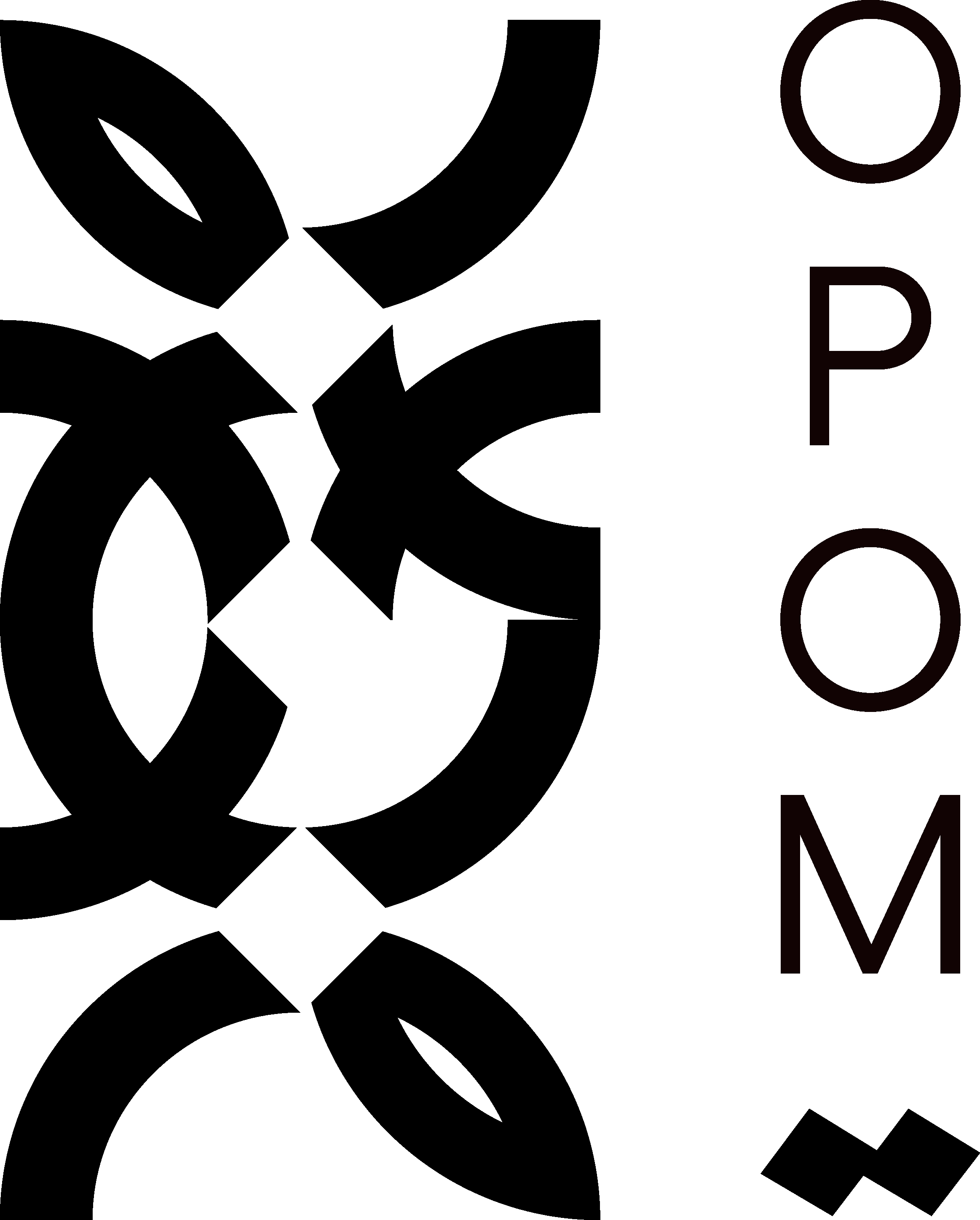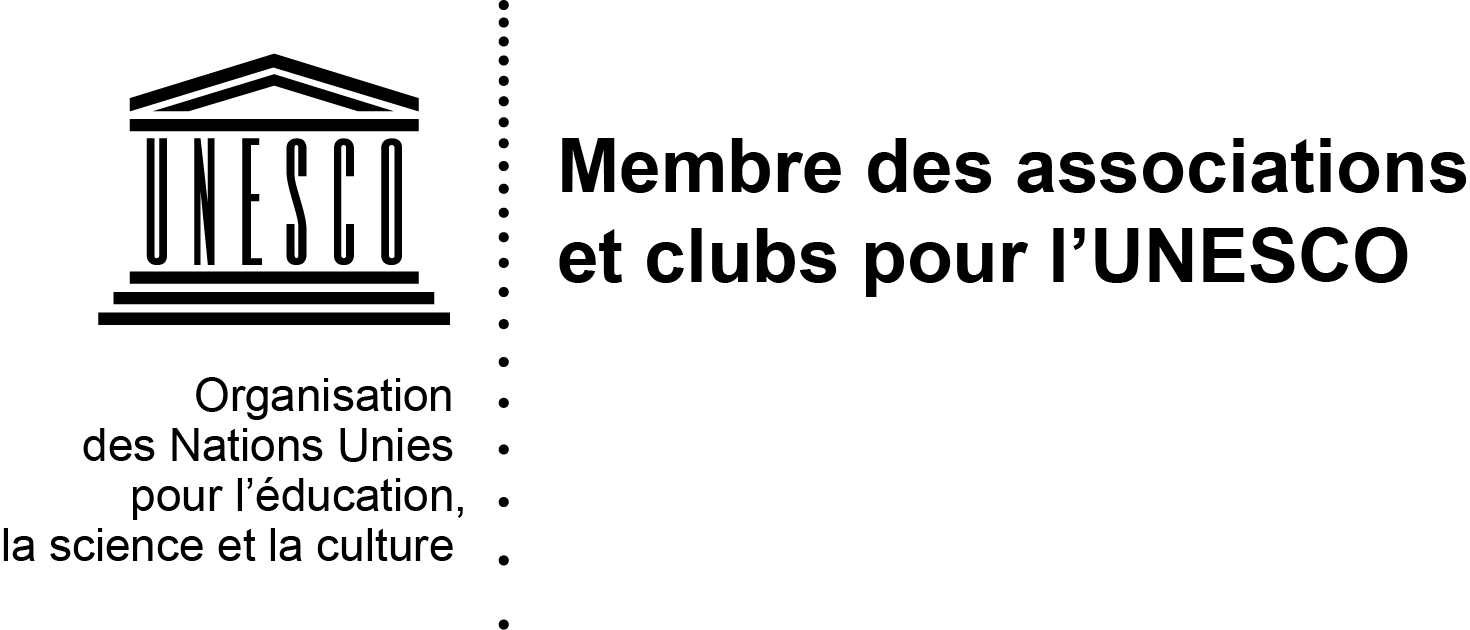Le 21/05/2020 by Elie Saad
“In architecture school, or any other design & arts school, when having difficulties drawing a perceptive of a certain shape, we put it in a box. The pure geometrical square sides of the box simplify the object and its spatial interpretation. Nevertheless, not all squares reflect simplified visions. Some squares themselves become complexes reflecting real life conditions rather than theoretical ones. At this point reality itself must be simplified, to be interpreted, most often in historical squares and their evolution”
The paragraph above although “philosophical” reflects the situation of a square, a complex one, currently named Marty’s square. This rectangular square reflects the evolution of the Lebanese state, society and glimpse of the future.
The Ottoman Era (1600s – 1918)
In the late 1800s, the steam of modern machinery was transforming several European cities into large metropolitan areas. At the same time, on the eastern Mediterranean coast, the history of a, then small, town was being re-written.
Early Ottoman Era

In the beginning of the 1800s Beirut was a small coastal town of nearly 4500 inhabitants, a dirty town plagued by several pandemics at the time and lacking basic services [1]. During the late 19th century, an Egyptian invasion, led by Mohamad Ali, turned Beirut into a regional command post and led to significant upgrades in the city’s infrastructures. Additionally, also in the same period, due to the opening of the Suez Canal, the demolition of the town wall, and the creation of the Ottoman rail network, the little town became a strategic city location with 120 000 inhabitants.
In 1888 the Ottoman declared Beirut as capital of the Wilaya, spreading over 30 000 km2 (for perspective current area of Lebanon 10 452 km2) [2] and several plans were drawn to magnify this new strategic comer. One of these important plans, which will be studied in this paper, was the creation of a park in former maidan in the south east of the former wall of the city. This maidan, once on the edge of the city, will be transformed and rapidly become the center of Beirut.
The maidan was known as “Sahat al-Burj” (translation: “Square of the Tower”). This designation comes from the era of the Lebanese emir “Fakher al-din al-Thani” when he erected a Tuscanian styled palace in the area in the 17th century. Alongside the palace a tower was built, “Burj al-Kashef” (Translation: The overlooking tower), thus giving its name to the square. A name intriguingly still being used till 2020, although the tower is long gone. The palace also had a garden, with French cannons displayed in it. In 1773, the Ottoman governor removed the old cannons and placed newly acquired Russian cannons instead, which led to a new name for the square “Sahat al-madfaa” (translation: Square of the Cannon). Little is known about this period and specifically the palace of Fakher al-din and the exact placement of the cannons.
The area was generally empty, without holding a significant importance due to its position outside the city walls, thus its designation as maidan. It mainly served as a stop for the caravans coming from the Arabian Peninsula and Iraq as well as a market and a trading post. On the western side of the maidan an Ottoman barrack and stable were erected, on the southern edge one of the seven towers that protected the walls of Beirut were built, on the eastern side a small garden was situated known as “Mazraait al-Saifi” (translation: the farm of Saifi) and finally on the Northern edge were located the Muslim cemeteries of the time along with pottery and taming workshops
Late Ottoman Era

In 1884, with the rising strategic importance of Beirut and the complete demolition of the city walls, the first urban landmark was created in the zone. The Ottoman, to showcase their power and prestige, inaugurated a park in the maidan, radically transforming its Arabian /Middle eastern identity to a more Westernized / European one.
The fenced park evolved throughout the years as the pictures and illustrations show, it contained fountains, urban infrastructures, pergolas as well as several types of trees and plants. Kiosk (b) was the first one to be built, followed by kiosk (c), and later on Café (a) was added, its construction can be seen in photos taken in 1880. With the inauguration of the park a new name was employed “Sahat al-Hamidiya” (Square of Hamidiya), as a gift for the Sultan Abed Al-Hamid on his birthday. A name mostly forgotten and unknown to most Lebanese, for when asked about the Hamidiya square most will refer to the Damascus located square rather than the Beiruti one. Although built in a public space the park was not open for the public, but only for the elite and upon paying an entrance fee, thus implementing a change on the nature of the users and their social classes [3].

www.lebanoninapicture.com1

source: www.lebanoninapicture.com

The area outside the park was more accessible for the common, and specifically on the western side of the southern gate, a small public café war erected directly in front of the fence. Horses and chariot used the southern entrance side as a parking lot, while the northern entrance directly confronted the petit serail. The serail served as the main Ottoman administrative building, also used by the later government of the Lebanese Republic as its headquarter until its demolition in the 1950s. The western and eastern sides of the square were packed with the typical 2 to 3 stories buildings of the era, with shops on the ground floor and residential units filling the upper floors. During this period, several modifications were enacted including the construction of a small café inside the park, on the vestige of one of the fountains, and several small pergola-like structures.
In the early 20th century the square was named the “Union square” or “Garden of Freedom” due its strategic location and because it was the main protest square, a role that it will replay almost a century later. The Ottoman intentions of creating a cityscape like the ones seen in Paris, Vienna and London can be observed in the design of the square as well as several interventions throughout the city, as well as the creation of the Tramway network.
Other than the urban “acts” that changed the spatial identity of the square and users, one single act changed the socio-political identity of the square like no other. On the 6th of May 1916, 16 Lebanese journalists, merchants and political figures were hanged in the square for opposing the Ottoman rule and demanding the independence of Lebanon. Interestingly, at the same times Syrian journalists were also executed in the Mazzeh square in Damascus too. This event encouraged the newly established French mandate of 1918 to officially rename the square as Martyr’s square, a name still holding 102 years later.
The French Era (1918 – 1943)

Other than changing the name of the square, the French mandate re-designed the entire space, making it more accessible to the public. The park was demolished, a new garden à la française was enacted, a large fountain in the middle as well as two green fenced gardens positioned to the northern and southern borders. The kiosks were removed, and some parking spots were added to the south. The square had a large sidewalk, the largest that it will ever see, as well as vibrant socio-economical identity. It became a cultural and economical node in the city, while the Nejmeh square, were the parliament was located, became the political node.

source: www.lebanoninapicture.com
In 1932, the French authorities placed a statue, created by the Lebanese sculptor Youssef Hoyek to commemorate the martyrs, named “al-Bakiyatayn (translation: the two crying ladies), depicting a Muslim and a Christian women holding hands and crying over the martyrs. The statue was vandalized later on, and in the 50s, the Lebanese government moved the statue to the Sursock Museum where it can still be found until this day, with the vandalized part removed, thus almost half of the statue remains displayed in the museum’s garden. The French, like their Ottoman predecessors, wanted to make Beirut their “vitrine” to the world, they wanted to showcase their colonial might and prestigious advancement [4]. Several plans were drawn for Beirut in this area, most notably by architect and urban planner Michel Ecochard, many of these plans will be executed years later by the Lebanese authorities [5].
The Lebanese Republic era
Pre-war (1943 – 1975)

During World War Two Beirut did not see major destruction similarly to most European cities, thus the city scape was not impacted in a major way. In the midst of the war, on the 22nd of November 1943, Lebanon gained its independence. The newly established nation had Beirut as capital hence increasing the importance of the city.
During the pre-war era the square prospered with the Lebanese economy, and it remained a major cultural and economical node in the city. The square summarized the entire economical, social, cultural and political life in the country, so much that its new name became “al-Balad” (translation: the country) a single square that summarized an entire nation [6]. In the 1950s? the Lebanese government removed the statue of al-Bakiyatayn (as explained in the paragraph before) and launched an international competition to conceive a new statue. The Italian sculptor Marino Mazzacurati would win the competition by creating the statue of the martyrs currently displayed in the square, the statue was placed on top of the French fountain in 1970.

In this era Lebanon was becoming more westernized or western inclined, the car culture was conquering the society. Demand for parking spaces and more road area was growing, the large sidewalk was reduced to a passageway enough for two to three persons to make room for more parking spaces. The tramway was put out of service in 1963 and its network transformed into paved car roads. The petit serial was demolished in the 1950s in order to ease traffic congestion [7]. A modern cinema Rivoli was built, retracted a little bit in comparison to the former serail to make place for a small parking area. Just in front of the parking area a flower clock was erected, it also became an important landmark, and it would emit a sound each hour in Arabic, English and French to let passerby know the time. The square slowly became a major buzzling transportation hub full of parking spaces, taxis and busses connecting the four corners of Lebanon.

Heritage [FB group]
During the war, the symbol of the Lebanese unity was to become the symbol of their division. The square became the first point of the green line, a line that separated Beirut into two entities, Christian West Beirut, and Muslim East Beirut. A line only nature could conquer, maybe as a sign of the futility of the war. Heavy fightings took place in the square, the entire urban setting was destroyed, and the statue was sprayed with countless bullets.
Postwar era

1990 saw the end of the Lebanese Civil War (1975-1990), with it the Lebanese saw the reconstruction of Beirut as a sign of unity and peace. The famous Lebanese singer Fairouz held a concert in the square to promote that fragile peace. The Lebanese USEK university restored the statue, leaving the bullet holes as a reminder and a historical lesson to be learned. Then Prime minister Rafik Harriri, envisioned a controversial plan to create a joint stock company to reconstruct the Beirut downtown area. The company will be named SOLIDERE, Société Libanaise pour le Développement et la Reconstruction du Centre-Ville de Beyrouth,(The Lebanese Company for the Development and Reconstruction of Beirut Central District).

The company destroyed most of old Beirut, and expropriated landowners giving them shares in the company, thus emptying Beirut’s center from its inhabitants. It also launched several competitions to design the square, none of which was applied. The square was turned to a gigantic parking lot, the Rivoli cinema was demolished in order to create a visual link to sea, an excavation took place to find the remaining underground structures of the petit serail, and Mohamad al Amine mosque was built on the periphery of the square, near the church of saint Georges. The square turned into another maidan, this time in the center of the city with an Ottoman-like intention to create an elitist zone. The cultural and economical importance of the square was almost non existing, a role that several adjacent streets will take throughout the years.
The square regained its importance in the political scene with the protest that took place on the 14th of March 2005, the biggest demonstration in the Lebanese history at the time. Slowly the square became known for its political importance, and Nejmeh square became more important as a economical node for the upper class rather than a political one as the French had envisioned. Throughout the years the square witnessed protests, sit-ins, an erection of political camps and some artistic exhibitions. In 2015 the “you stink” movement held massive demonstrations in the square with several clashes with security forces, this series of events continued and saw its peak in October 2019.

On the 17th of October, the Lebanese revolution erupted in a huge nationwide protest, on the 20th a major demonstration took place in the square, supposedly the biggest in the country’s history. The empty square was filled with tents of NGOs, a few political parties and people camping to demand the end of corruption. On several occasions the square witnessed clashes with the security forces and political parties. And on the Independence Day for the first time in Lebanon, a “civil parade” was organized by volunteers in the square. (at the same time, the Lebanese government and Lebanese armed forces held another private parade in the ministry of defense).
Future prospective

The square typically held an Ottoman military parade to showcase the power and might of the empire, when the French first entered Lebanon they paraded their men and equipment in the square. Now, new types of parades are being held, a parade that might give a small insight to the future. Like the Ottomans, the Lebanese government transformed the downtown Beirut into an elite zone. Like the French, the Lebanese government drew plans but never executed them. Like the early governments, the post war governments destroyed the historical identity of the square. Like their ancestors, the Lebanese stood in this same square to demand their rights and independence from the corrupted system, 104 years after the first martyrs.

[1] http://www.globe-reporters.org/campagnes/liban/economie-histoire-et-politique/article/la-place-des-martyrs-un-concentre-d-histoire-libanaise
[2] Narrating Beirut Public Spaces Westernization; https://journals.openedition.org/mediterranee/11486
[3] Narrating Beirut Public Spaces Westernization; https://journals.openedition.org/mediterranee/11486
[4] Beyrouth et ses urbanistes ; chap 1 L’urbanisme du Mandat français : ruptures et continuités ; https://books.openedition.org/ifpo/2167 [5] Beyrouth et ses urbanistes ; chap 7 Centre-ville et construction nationale ; https://books.openedition.org/ifpo/2167 [6] http://www.globe-reporters.org/campagnes/liban/economie-histoire-et-politique/article/la-place-des-martyrs-un-concentre-d-histoire-libanaise [7] Beyrouth, une ville d’Orient marquée par l’Occident; chap 3 Les pôles de l’économie urbainehttps://books.openedition.org/ifpo/3823


10 comments
Hiring [url=https://contractorfinder.geappliances.com/contractors/p-j-mechanical-llc-40182-weymouth-ma ]P J MECHANICAL LLC Weymouth MA[/url] was a game-changer against my home renovation project. From the beginning consultation to the final walkthrough, their professionalism and savvy were evident. The rig was communicative, ensuring I was informed at every stage. Their prominence to detail was immaculate, transforming my vision into actuality with precision. Notwithstanding a occasional unexpected challenges, they adapted before you can say ‘knife’, keeping the concoct on track. The characteristic of travail exceeded my expectations, making the investment worthwhile.
Hiring [url=https://contractorfinder.iko.com/contractors-norway-me ]IKO Roofing Contractors Norway ME[/url] was a game-changer against my habitation renovation project. From the beginning consultation to the final walkthrough, their professionalism and savvy were evident. The rig was communicative, ensuring I was informed at every stage. Their attention to detail was impeccable, transforming my vision into actuality with precision. Teeth of a only one unexpected challenges, they adapted swiftly, keeping the contract on track. The characteristic of commission exceeded my expectations, making the investment worthwhile.
Hiring https://contractorfinder.geappliances.com/contractors was a game-changer for my poorhouse renovation project. From the commencing consultation to the final walkthrough, their professionalism and expertness were evident. The conspire was communicative, ensuring I was in touch at every stage. Their attention to delegate was unblemished, transforming my delusion into actuality with precision. Notwithstanding a only one unexpected challenges, they adapted swiftly, keeping the contract on track. The calibre of commission exceeded my expectations, making the investment worthwhile.
Hiring https://contractorfinder.iko.com/contractors-englewood-cliffs-nj was a game-changer quest of my accommodations renovation project. From the initial consultation to the concluding walkthrough, their professionalism and expertise were evident. The rig was communicative, ensuring I was informed at every stage. Their prominence to specify was impeccable, transforming my chimera into actuality with precision. Teeth of a infrequent unexpected challenges, they adapted unexpectedly, keeping the engagement on track. The quality of commission exceeded my expectations, making the investment worthwhile.
Very interesting points you have observed, appreciate it for
putting up.Blog monry
Thank you for your sharing. I am worried that I lack creative ideas. It is your article that makes me full of hope. Thank you. But, I have a question, can you help me?
Your article helped me a lot, is there any more related content? Thanks!
Exploring [url=https://rvfhemp.com/collections/pet-treats ]hemp for pets[/url] and pre roll weed has been an enlightening journey object of me. The worth and aroma of these products are stirring, gift a calming and enjoyable experience. Whether I’m unwinding after a crave period or seeking creative enthusiasm, hemp pre-rolls plan for a commonplace alternative that I can trust. The convenience of pre-rolls combined with the benefits of hemp flowers make them a go-to select for the treatment of r ‘rest and mindfulness. I perceive the limelight to charge and spotlessness of the products, enhancing my overall satisfaction. Greatly subscribe to tough hemp flowers and pre-rolls an eye to a holistic and fulfilling experience!
Exploring https://rvfhemp.com/products/sweet-harmony-pre-rolls and pre roll weed has been an enlightening trip for me. The quality and aroma of these products are impressive, offering a calming and enjoyable experience. Whether I’m unwinding after a extensive period or seeking resourceful incentive, hemp pre-rolls take measures a common choice that I can trust. The convenience of pre-rolls combined with the benefits of hemp flowers occasion them a go-to voice for the purpose relaxation and mindfulness. I perceive the limelight to group specifically and honesty of the products, enhancing my complete satisfaction. Exceptionally praise tough hemp flowers and pre-rolls in place of a holistic and fulfilling trial!
Thanks for ones marvelous posting! I actually enjoyed reading it, you will be a great author. I will ensure that I bookmark your blog and will often come back at some point. I want to encourage you to ultimately continue your great work, have a nice afternoon!
Comments are closed.